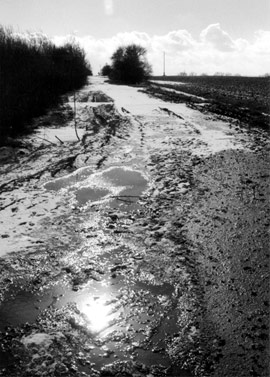
- What is VIA REGIA?
- VIA REGIA - revitalization of
a historical road - history of the VIA REGIA (an essay)
- VIA REGIA - ramble through Europe
- VIA REGIA - library
- VIA REGIA - route course
- VIA REGIA - paraphrases on
a historical road - VIA REGIA - picture galleries
- VIA REGIA 2005 - What we are,
we are through others, too

The term VIA REGIA has several meanings:
Originally, it defined the legal status of particular medieval roads. In the Holy Roman Empire of the German Nation, when kings were still
strong and powerful, they could guarantee the protection of roads. Roads under this royal protection were called VIA REGIA. With the fall of the
central power of the king, from the 14th century on, it was no longer possible to talk about a VIA REGIA in the legal sense. The rights
over the roads passed on to individual lords.
In some European regions, “VIA REGIA” appears as a (mostly historical) road name that is based on the original status of a
“King's Road” and can occasionally be found in today's cartography.
In the German language, the term VIA REGIA is used as a metaphor, especially in sciences and politics, and means “king's road”,
“golden trail”, a way for optimal problem solving. During a conference in which local Saxon politicians participated in 2002, the title
“VIA REGIA – Europe's Royal Road” was used for the first time. It pointed out the symbolic meaning that one historical VIA REGIA in particular,
running from Western to Eastern Europe, can have for the process of European integration.
Finally, VIA REGIA is the name of an economic, cultural, tourist network, which embraces the different meanings of the term.
This network gives the name VIA REGIA to the oldest and longest road link between Western and Eastern Europe uniformly, practices new forms
of international cooperation and was recognised as a “Major Cultural Route of the Council of Europe” in 2005.
This expanded conception of the VIA REGIA ties in with the eponymous road's section in Central Germany and follows its continuation on
Western and Eastern Europe. It is doubtless that the VIA REGIA includes different roads' systems that have been related to each other in
different times but that show characteristics of a relatively constant course of the road on a grand scale. On this road, the main forms of
European exchanges between East and West took place over centuries, and the route is connected to decisive events of European history.

